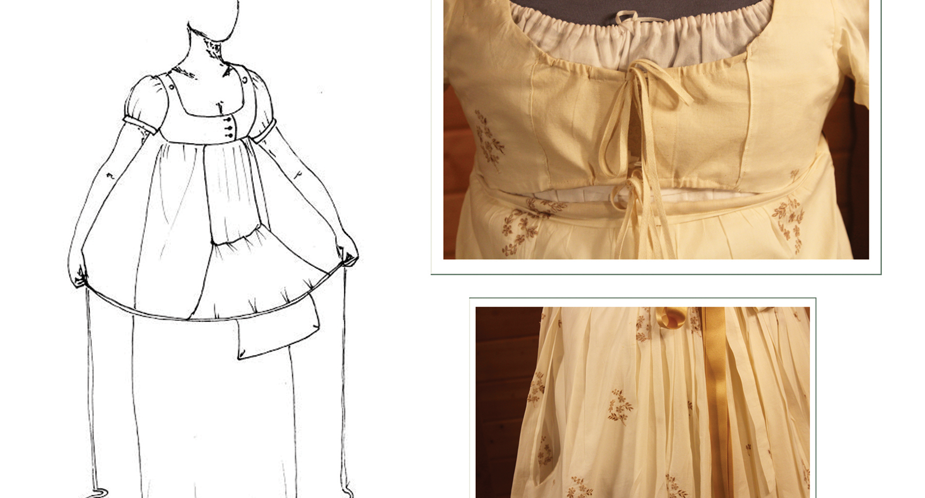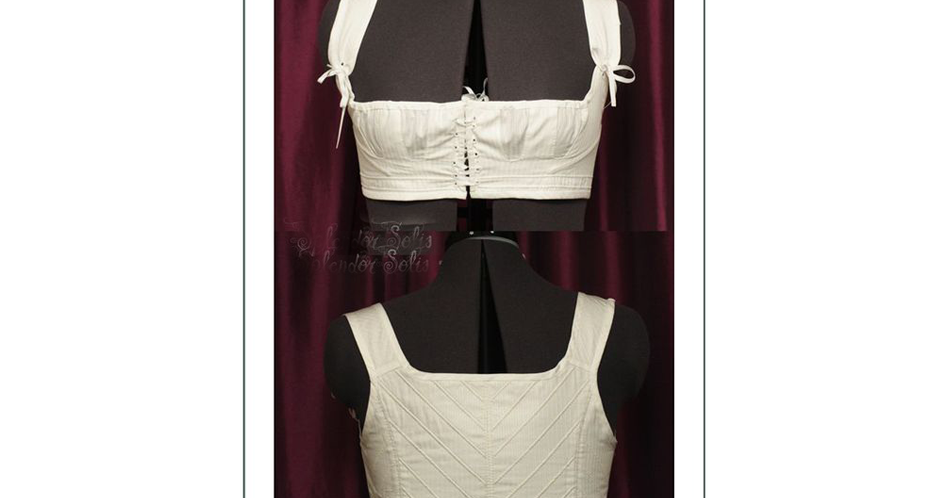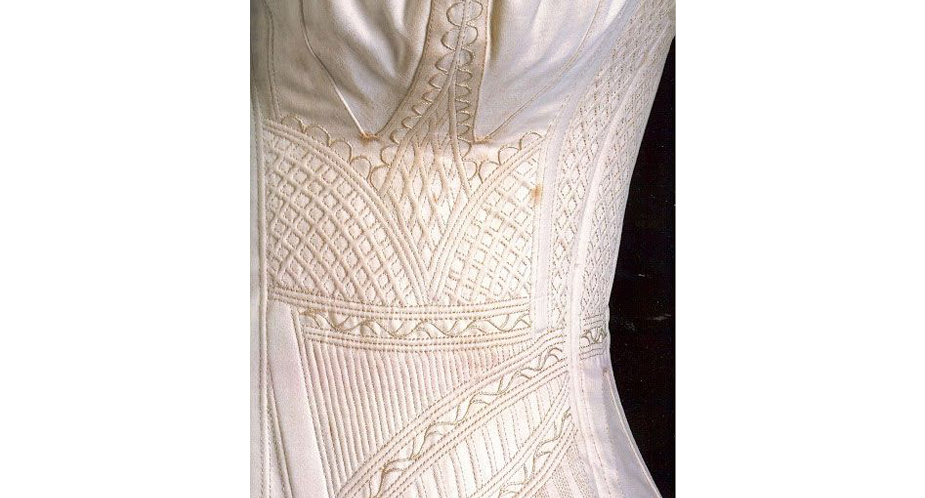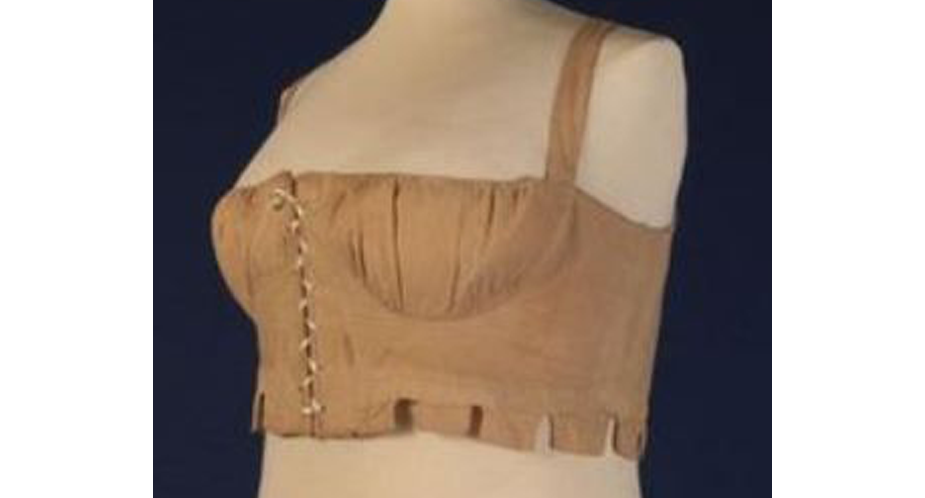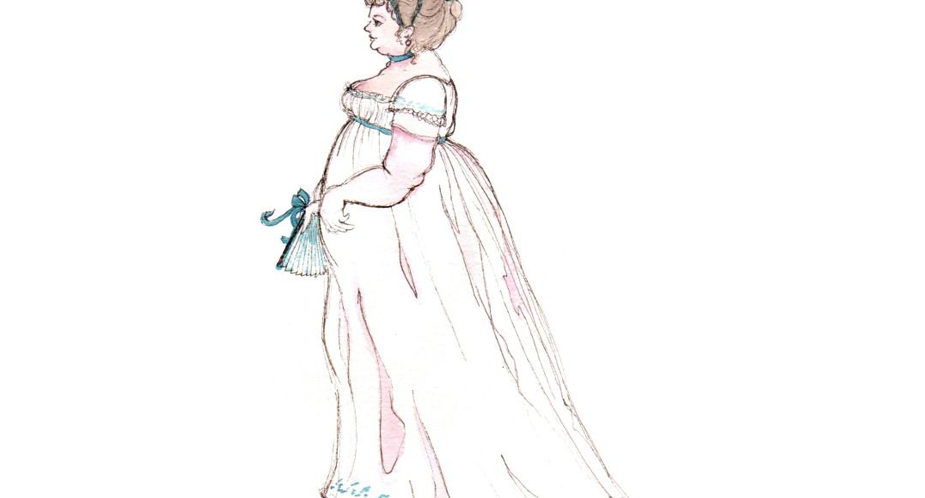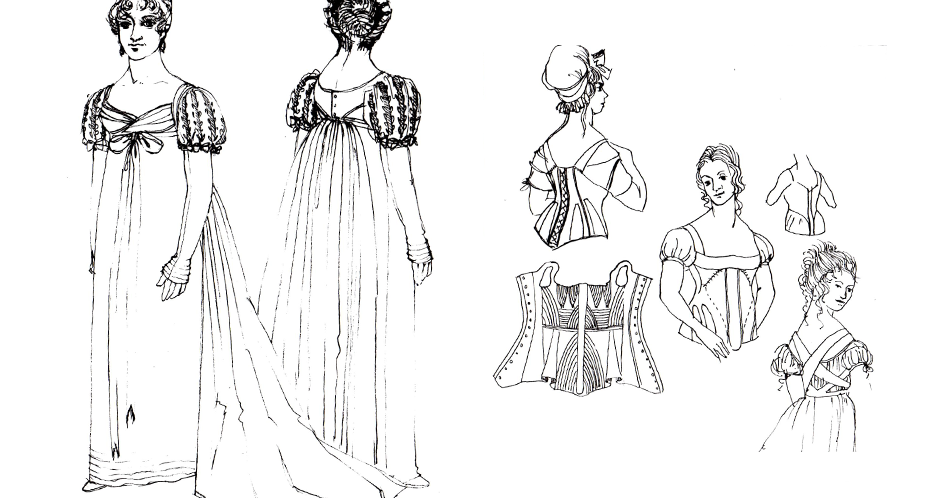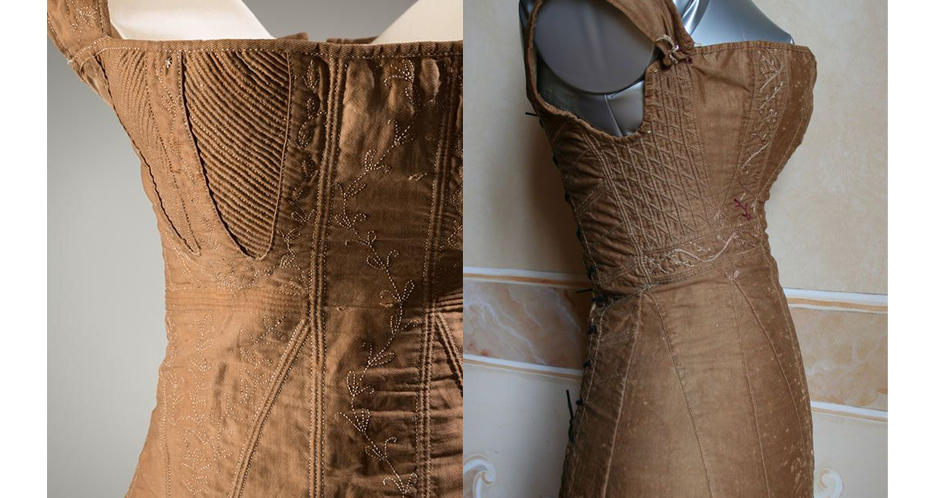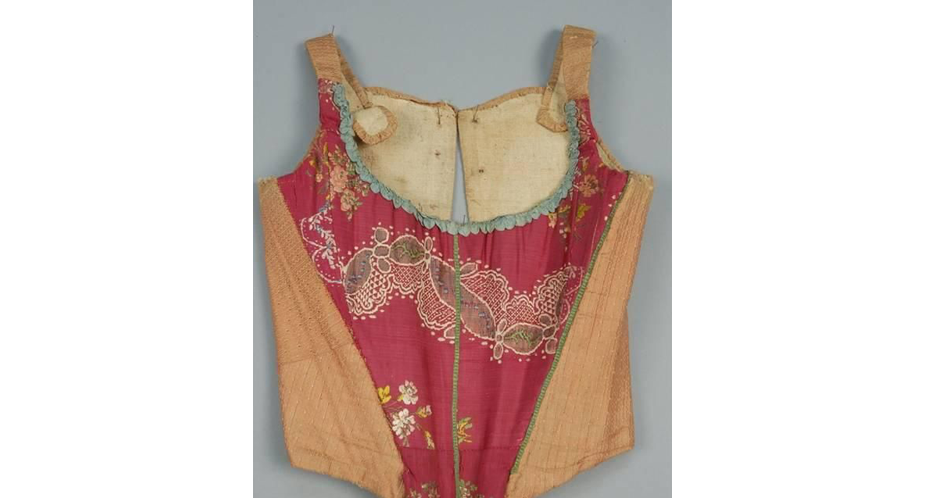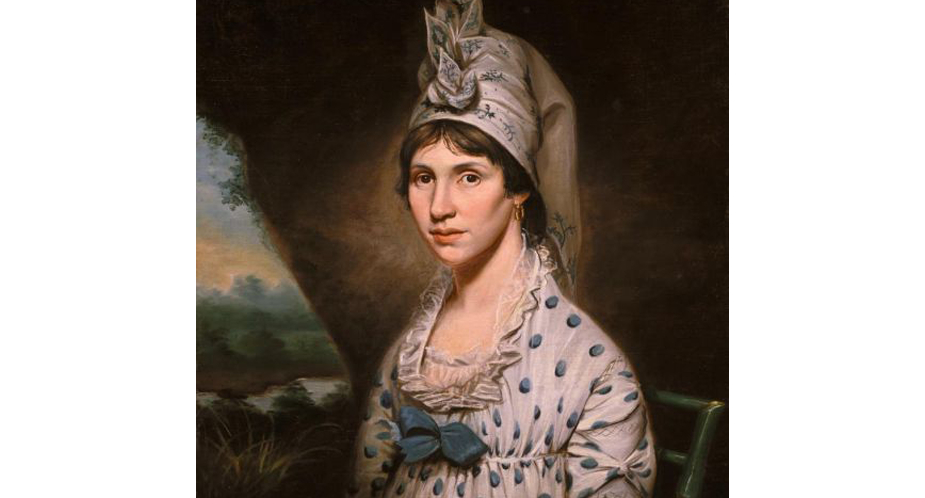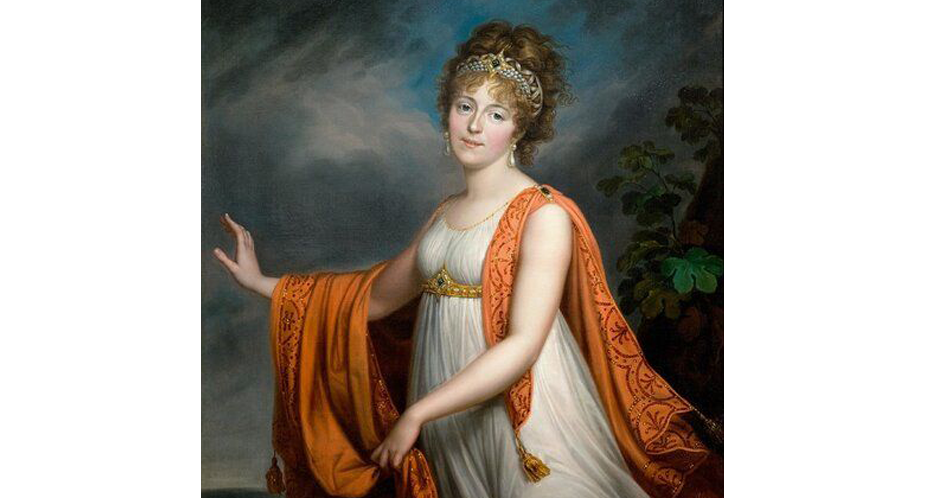…were mounted on a cotton lining with two side pieces that would cross over and fasten in front, providing a type of “binding” or support. It acted as a type of early brassiere, and for many women, was the only thing worn. (Sketch and photo: Regency bib and pleating)
